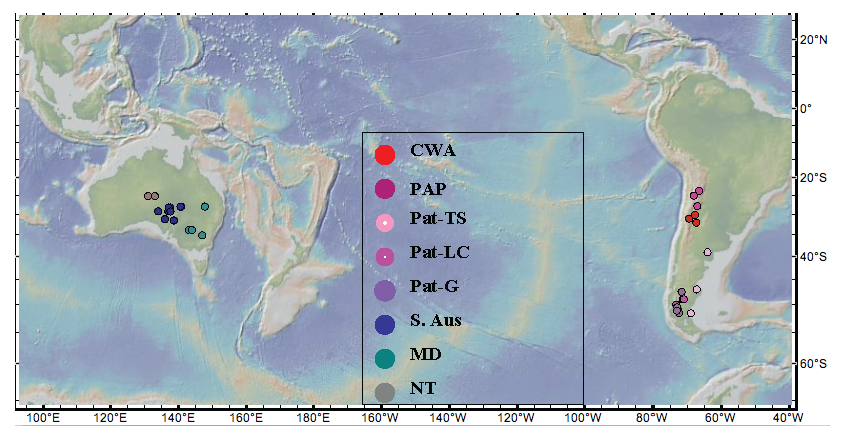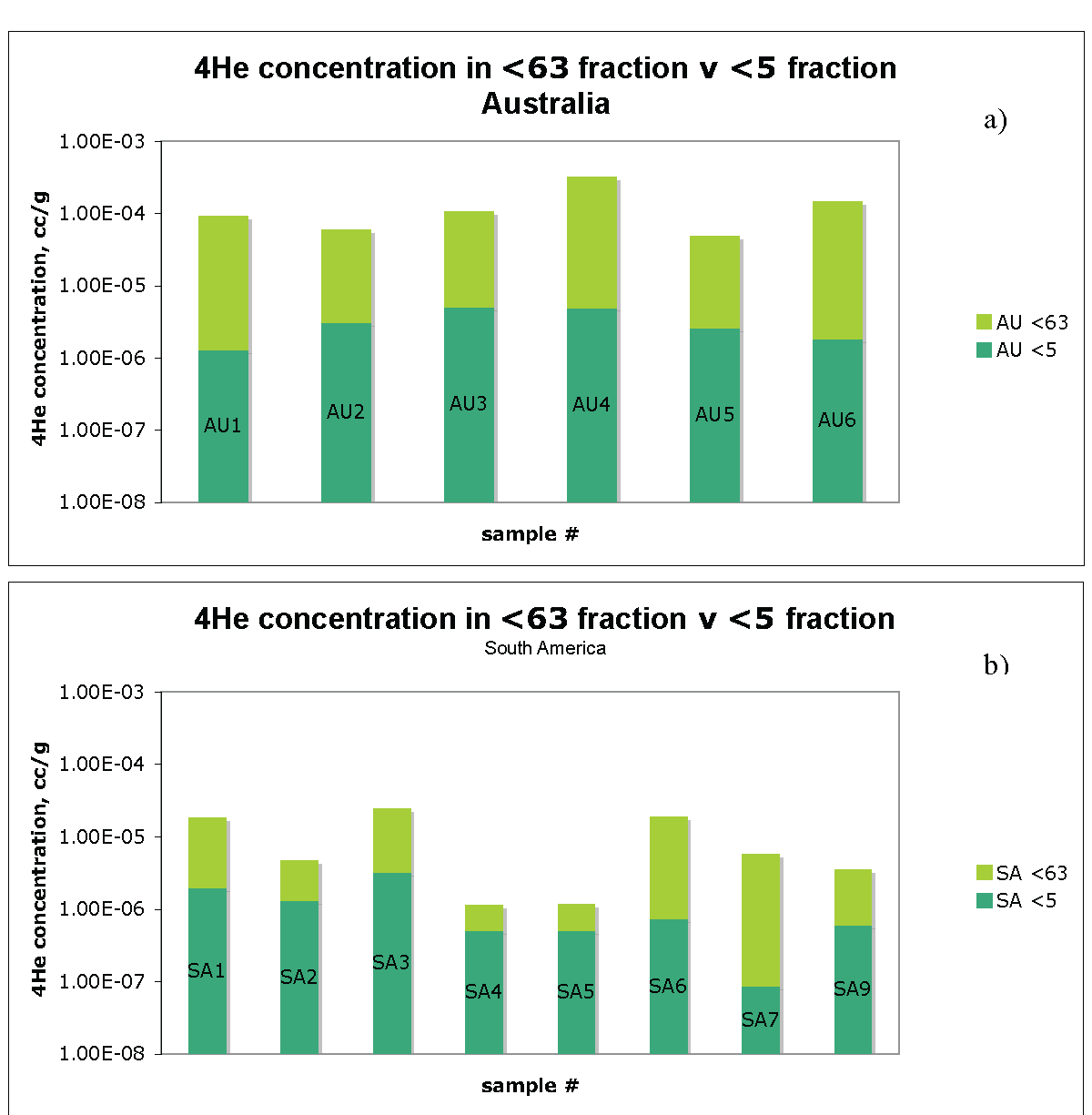
Mineral dust plays an important, if poorly understood, role in the global climate system. Dust transported to Antarctica in the Southern Hemisphere atmospheric system may impact global climate directly or indirectly, and also can be used as a tracer of current and paleo atmospheric circulation. We use a new proxy, 4He/Ca, to investigate the source of dust to the EPICA Dronning Maud Land ice core (EDML, 75°S, 0°E) during the Last Glacial Maximum (LGM) and the Holocene. Patagonia appears to be the major source of dust for LGM EDML, while the Holocene results are more ambiguous; regions of South America north of Patagonia may contribute to the dust load, while we cannot rule out Australia as a source.
|
Figure 1. Map of sample locations. CWA=Central Western Argentina, PAP =Puna Altiplano, Pat-TS= Patagonia samples from Lago Cardeil, Pat-G=Patagonia glacial material samples from the Andean foothills. S. Aus=South Australia (not including Vallelonga's samples, which all fall near the mapped ones), MD=Murray-Darling Basin, and NT = Northern Territories. |
 |
Figure 2. 4He/Ca ratios provide the clearest signal of the variability between continents and regions (Figure 9). If a sample has a 4He/Ca ratio of less than ~2X10-8, it is most likely from sone region of South America; if it is below ~2X10-10 it is likely to be from Patagonia proper and not the more northerly reaches of South Americe. This level of regional/continental identity allows the 4He/Ca ratio to be used as a proxy for dust source control. These charts show 4He concentrations in different size fractions of the samples, from Australia (a) and South America (b). The <5 size fraction is always lower than the <63 size fraction. The Australian samples are more uniform in their offset than the South American samples. |
Go to Science Research Projects.
Go to Learning Objectives of Research Project.
Return to E&ESJ home page.
Last updated: 19 January 2006, MKT.